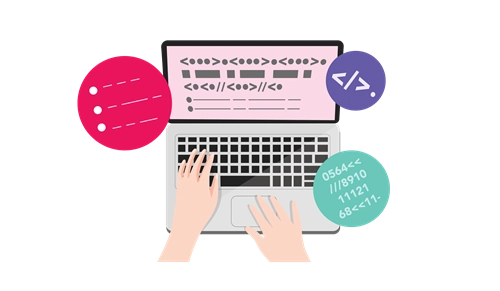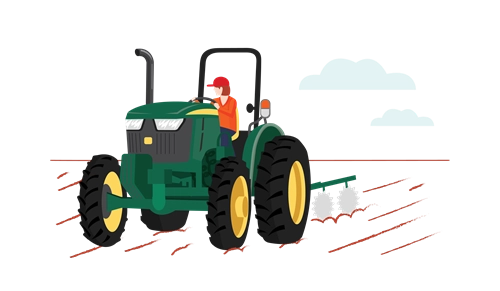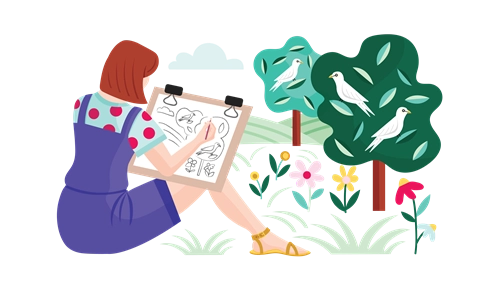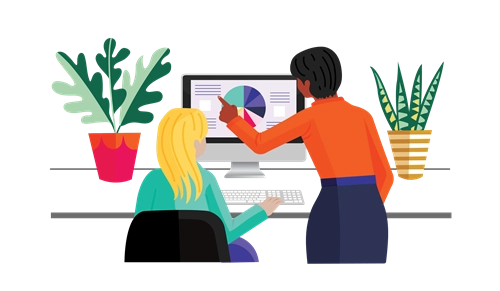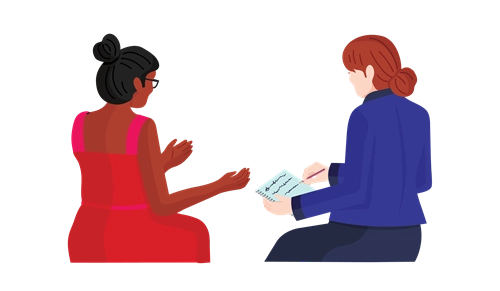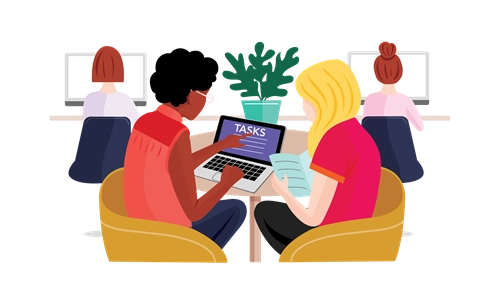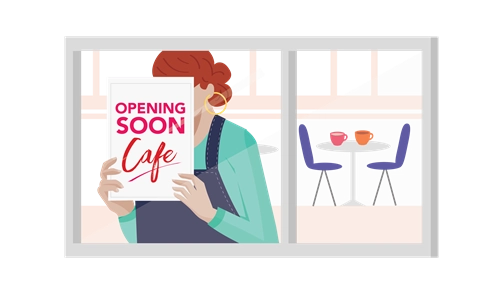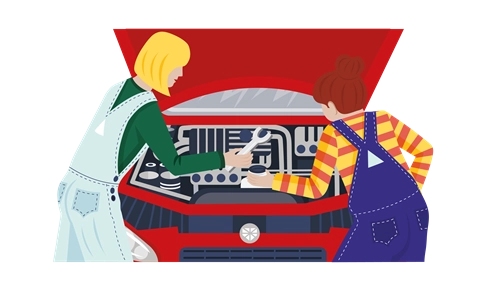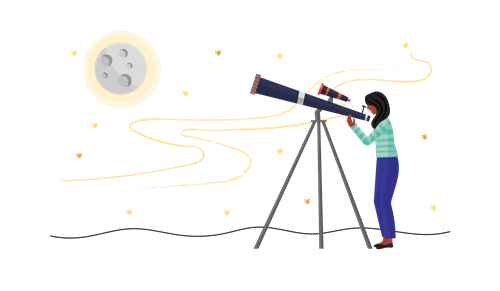Dr Cathy Foley
The GiST team chats to Dr Cathy Foley about her vision for women in STEM and her life as Australia's Chief Scientist.

Dr Cathy Foley
Australia’s Chief Scientist
"You don’t have to be Einstein’s cousin to do science subjects. All you need is a knack for asking questions, thinking about how to solve problems, and perseverance. That’s the same for any job really – stick with it and you will get there. "
What drove you to become a scientist?
I don’t come from a science family, but in primary school I was always really interested in what was then called nature studies. My older brothers and sisters brought home their Harry Messel science text books. They were huge … I just loved poring over those books, right from the first photo, which was a dissected rat, and I still have them all at home. Also, I struggled with spelling and writing – I later found out I was dyslexic, so other subjects were often more challenging.
I was lucky to have a teacher at school who encouraged me to enter science competitions, and a lecturer at university who encouraged me to do a PhD. That lecturer was a real mentor and role model. Her husband was also a professor at the university and I used to coach their three kids in maths and physics at high school. so I saw their family life. This helped me envisage a research life for myself.
What advice would you give your younger self?
To seek out advice and help. Aspire big, think big and bold and ask questions about how to get there, rather than thinking you have to figure it all out for yourself. I didn’t have a lot of belief in myself so if it hadn’t been for those mentors at school and university I wouldn’t have known to pursue a science career.
You’ve been a scientist for 36 years – how has the sector changed for women during this time?
It has changed dramatically in some ways. In the early days I felt like a bit of an outlier. I was the only female research scientist when I started at the CSIRO in 1985. There was no such thing as long day care, paid maternity leave was limited, and working part-time was much less common.
But it’s still not easy. There’s a very long way to go and in my role as Australia’s Chief Scientist I have been hearing from women about some of the issues they face. My Office published a report on Australia’s STEM Workforce last year, which found women made up only 29% of the university-qualified workforce in science, technology, engineering and maths at the last national Census in 2016. The biggest gap is in engineering, where women are only 15% of the university-qualified workforce.
It is disappointing to see very limited improvement over the past 10 years. It’s also disappointing that the proportion of women in management and executive positions is much lower than their numbers in the wider workforce.
But there is more recognition now that gender diversity is important, and ways of working are changing, with more ability to work flexibly with different hours, and from home, which will be of benefit to women. And we do have a very big focus on this at the national level.
Australia doesn’t have nearly enough engineers, data scientists, people with skills in the new space and defence industries, people with skills in artificial intelligence, robotics and quantum computing. These are all really exciting areas to work, and I know that if we can encourage girls and women to pursue these careers there will be no shortage of opportunities.
The other good news is that we have women heading science agencies. The Defence Chief Scientist is Tanya Monro. Two of the state Chief Scientists are women. The inaugural head of the Space Agency was Megan Clark. When Donna Strickland won the Nobel Prize in Physics in 2018 – for her work on intensifying lasers – it had been 55 years since the prize had gone to a woman. Just two years later a woman won again – Andrea Ghez for the discovery of a supermassive black hole at the centre of our galaxy. In 2020, two women, Emmanuelle Charpentier and Jennifer Doudna, won the Nobel Prize of chemistry for their discovery of a high-precision method of cutting DNA.
What do you hope to accomplish in your role as Chief Scientist?
I have many things I want to accomplish, but I know from my science career that it pays to tackle one problem at a time. Among tasks I am focused on this year, I am establishing a working group on quantum technologies, to ensure Australia capitalises and grows its expertise in this field. Quantum sensing, quantum computing and other quantum technologies are set to revolutionise many areas of science, and we need educators, students, governments and others to understand what it’s all about.
A big inhibitor to innovation is getting access to research. Many of the scientific papers we produce are locked up behind paywalls and it costs a lot of money to read them. So I am working with stakeholders to consider the benefits of an open access scheme. This would allow schools and everyone else in our community to access the research literature.
How can we work together to get more girls involved in STEM subjects?
I think we can do more to show school students the pathways to a career. There’s a lot of information out there, but there seems to be blockages in that information being shared. So I really encourage students and parents and teachers to research future options.
Now, this is a big generalisation, but I sometimes wonder whether girls are more strategic or organised in looking into their choices, and thinking ahead to a career from quite a young age. But it can be really difficult to imagine a science career. Most people don’t even consciously recognise that they know a scientist. What are the specific jobs that you might do as a scientist or engineer and what are the steps that get you there? This is easy to imagine if you are thinking about being a doctor, or a nurse, or a teacher, but it’s more difficult in a field as broad as “science”, or a sector as future-looking as artificial intelligence.
We also need to rethink the ways we judge research careers. Do our institutions and employers have the right incentives in place so that women are not disadvantaged when they take time off for children, or work part time? At the moment, the focus is too skewed towards the number of publications, which is only a small part of the output of a scientist, and women are disadvantaged if they are not producing as many publications due to working fewer hours.
How can we benefit from diversity in STEM?
Greater diversity gives us a better chance of solving difficult problems by bringing a range of different perspectives. It’s also essential across the STEM fields to ensure we make the right decisions about equipment, infrastructure and technology so these things work for everyone. The era of artificial intelligence and machine learning brings a range of ethical issues, including how to ensure that the assumptions built into algorithms and datasets are free from bias. We need a diverse workforce for this to happen.
Diversity is also good for economic success. A report from the Workplace Gender Equality Agency in 2020 looked at the top 500 listed companies in Australia over seven years, and found that increasing the number of females among top-tier managers by just 10 percentage points led to a 6.6 per cent increase in the company’s market value. Having a female chief executive led to a 5 per cent increase in market value. Unfortunately, women make up only 17.1 per cent of chief executives, and about 30% have no women in key management teams. So there is still work to do.
What advice do you have for girls interested in STEM?
Take the plunge! It might not be obvious to you where you will end up, but I can almost guarantee it will be somewhere exciting.
Science is a great career with lots of flexibility and a huge range of jobs. You might find yourself working in the space industry, in the new wave of computing or robotics. If you want to make a positive difference to people’s lives, you can take the medical pathway, but there are many other science options that allow you to do that as well. You could work on new water filtration systems for people in developing nations, new forms of energy that don’t contribute to climate change, or more sustainable ways of growing our food that don’t damage the environment.
You don’t have to be Einstein’s cousin to do science subjects. All you need is a knack for asking questions, thinking about how to solve problems, and perseverance. That’s the same for any job really – stick with it and you will get there.
And remember that most jobs and opportunities come from introductions to others. It pays to make broad networks and reach out to people in those networks who can help you get where you want to go to.
